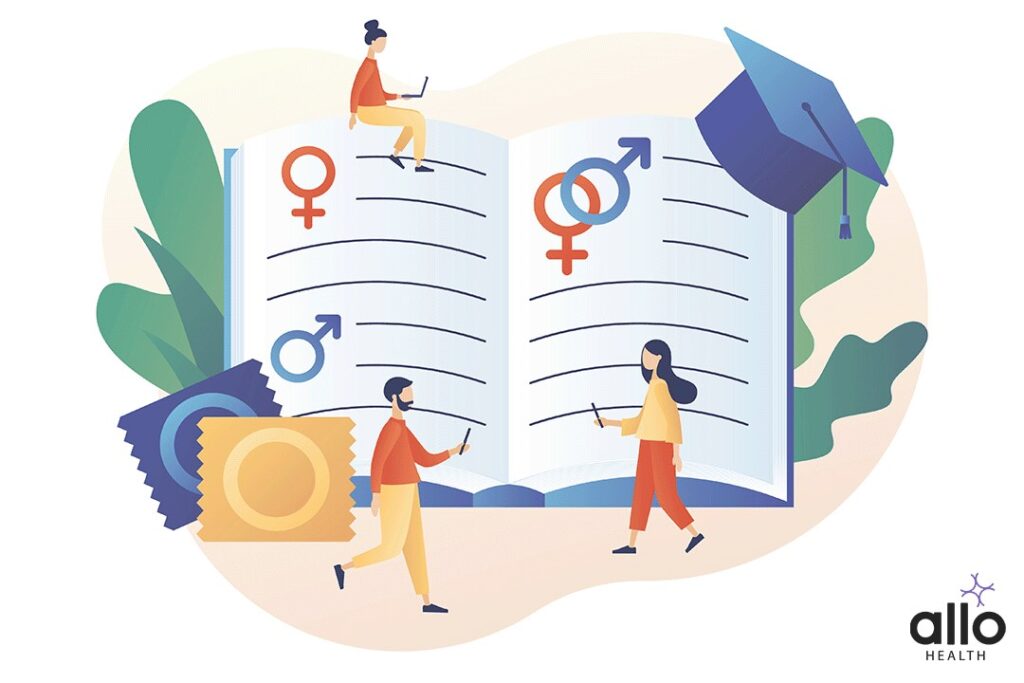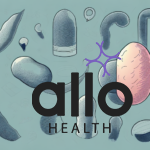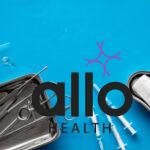Stages Of Sexual Response Cycle

Allo Health is dedicated to personalized well-being, offering support and trusted information tailored to individual health goals. The platform emphasizes human-generated content, led by a distinguished medical team of experts, including physicians and sexual health specialists. Their commitment to credibility involves rigorous fact-checking, authoritative research, and continuous updates to ensure accurate, up-to-date information. Allo Health's unique approach goes beyond conventional platforms, providing expert-led insights and a continuous commitment to excellence, with user feedback playing a crucial role in shaping the platform's authoritative voice.

A Psychotherapist with Clinical specialization, working for over seven years now. Areas of specialization range from Anxiety-related disorders, Mood-related disorders, Personality disorders, Sexual dysfunctions & other mental health issues.
Why This Was Upated?
Our experts continually monitor the health and wellness space, and we update our articles when new information became available.
Updated on 22 April, 2024
- Article was updated as part of our commitment to diversity, equity, and inclusion.

"The following blog article provides general information and insights on various topics. However, it is important to note that the information presented is not intended as professional advice in any specific field or area. The content of this blog is for general educational and informational purposes only.
Book consultation
The content should not be interpreted as endorsement, recommendation, or guarantee of any product, service, or information mentioned. Readers are solely responsible for the decisions and actions they take based on the information provided in this blog. It is essential to exercise individual judgment, critical thinking, and personal responsibility when applying or implementing any information or suggestions discussed in the blog."
The Four-Stage Model
The sexual response cycle is a four-stage model that describes the physiological and psychological changes that occur during sexual activity. The stages were first proposed by William H. Masters and Virginia E. Johnson in 1966 based on their pioneering research on human sexuality. The sexual response cycle is a helpful tool for understanding the complexities of sexual arousal and response, and can be applied to both male and female sexual experiences.
Phase 1: Desire
Desire is the first stage of the sexual response cycle. It involves a feeling of sexual longing or wanting, which may be triggered by internal or external stimuli. These stimuli can include thoughts, fantasies, sights, sounds, smells, or touch. In this stage, the brain releases hormones and neurotransmitters that increase sexual desire and drive. Testosterone, for example, is a hormone that is associated with sexual desire in both men and women.
Phase 2: Excitement
The excitement stage is characterized by physical and psychological arousal. During this stage, the body prepares for sexual activity by increasing blood flow to the genitals, causing them to become engorged with blood. In men, this can result in an erection, while in women, the clitoris and labia may become swollen and sensitive. The body also increases its heart rate, blood pressure, and respiration rate, as well as muscle tension.
Phase 3: Orgasm
The orgasm stage is the peak of sexual pleasure and is characterized by intense physical and psychological sensations. In men, it is typically accompanied by ejaculation, while in women, it is characterized by contractions of the pelvic muscles. During orgasm, the body releases a flood of hormones, including oxytocin, dopamine, and endorphins, which can produce feelings of euphoria and pleasure.
Phase 4: Resolution
The resolution stage marks the end of the sexual response cycle. During this stage, the body returns to its normal resting state, and the physical and psychological arousal gradually dissipates. The genitals return to their normal size and color, and the heart rate, blood pressure, and respiration rate all return to baseline levels. Some people may experience feelings of relaxation or sleepiness after orgasm, while others may feel energized or satisfied.
Sexual Disorders & Stages Of Sexual Response Cycle
Sexual response is a complex process that involves multiple phases, including desire, excitement, orgasm, and resolution. Sexual disorders can affect any of these phases, leading to significant distress and impairment in sexual function.
Desire Phase
The desire phase is characterized by a strong feeling of wanting to engage in sexual activity. Sexual desire disorders can affect this phase, including hypoactive sexual desire disorder (HSDD), which is characterized by a persistent or recurrent lack of sexual fantasies, thoughts, or desire for sexual activity.
Hypoactive Sexual Desire Disorder
HSDD can be caused by various factors, including hormonal imbalances, psychological factors, or medication side effects. Treatment for HSDD can include hormone therapy, psychotherapy, or medication such as flibanserin, which is the only drug approved by the FDA for the treatment of HSDD.
Excitement/ Arousal Phase
The arousal phase involves physical and psychological changes, such as increased blood flow to the genital area, lubrication of the vagina, and erection of the penis. Sexual arousal disorders can affect this phase, including
Female Sexual Arousal Disorder (FSAD)
FSAD is characterized by the persistent or recurrent inability to attain or maintain adequate vaginal lubrication (vaginal dryness) or genital swelling during sexual activity
Male Erectile Dysfunction Disorder (ED)
ED is characterized by the inability to attain or maintain an erection sufficient for sexual activity.
The causes of FSAD and ED can be physical or psychological, such as hormonal imbalances, medication side effects, or anxiety. Treatment for FSAD and ED can include medication, psychotherapy, or vacuum devices.
Orgasm Phase
The orgasm phase is characterized by a series of rhythmic contractions of the genital muscles and a release of sexual tension. Sexual disorders that can affect this phase include anorgasmia, which is the persistent or recurrent inability to achieve orgasm.
Anorgasmia
Anorgasmia can be caused by various factors, including medication side effects, hormonal imbalances, or psychological factors. Treatment for anorgasmia can include medication, psychotherapy, or sex therapy.
Premature Ejaculation
Premature ejaculation can be caused by various factors, including psychological factors, medication side effects, or neurological disorders. Treatment for premature ejaculation can include medication, psychotherapy, or sex therapy.
Resolution Phase
The resolution phase is characterized by a return to the pre-aroused state, and the resolution of sexual tension. Sexual disorders that can affect this phase include premature ejaculation, which is characterized by the persistent or recurrent ejaculation with minimal sexual stimulation.
Sexual disorders can affect any phase of the sexual response cycle, leading to significant distress and impairment in sexual function. It is essential to identify and address sexual disorders early, as they can have significant impacts on a person’s quality of life. Treatment for sexual disorders can include medication, psychotherapy, or sex therapy, and a healthcare professional can help determine the best course of treatment for each individual case.
Hormones & Stages Of Sexual Response Cycle
The human sexual response cycle is a complex series of physiological and psychological processes that occur during sexual activity. Each stage is regulated by a complex interplay of hormones that interact with various neural, vascular, and muscular systems in the body. This article will provide an overview of the hormones that affect each stage of the sexual response cycle.
Excitement Stage
During this stage, sexual arousal begins, and the body prepares for sexual activity. The primary hormone involved in the excitement stage is testosterone. Testosterone is produced in the testes in men and the ovaries in women. Testosterone plays a crucial role in increasing sexual desire and promoting genital vasocongestion, which causes the genitals to become engorged with blood. Testosterone also plays a critical role in the regulation of mood, behavior, and cognition, which can influence sexual arousal and desire.
Orgasm Stage
The orgasm stage is the third stage of the sexual response cycle, characterized by a peak of sexual pleasure and release of sexual tension. The hormone primarily involved in the orgasm stage is oxytocin. Oxytocin is a peptide hormone that is produced in the hypothalamus and released by the pituitary gland. Oxytocin promotes uterine contractions in women, which can enhance sexual pleasure and facilitate sperm transport. In men, oxytocin promotes the contraction of the smooth muscles in the vas deferens and seminal vesicles, which contribute to ejaculation.
Resolution Stage
The resolution stage is the final stage of the sexual response cycle, characterized by a decrease in sexual arousal and the return of the body to its normal, pre-aroused state. The hormones primarily involved in the resolution stage are prolactin and serotonin. Prolactin is a hormone that is produced in the pituitary gland and is involved in lactation in women. Prolactin is released during sexual activity and can reduce sexual desire and contribute to feelings of sexual satisfaction. Serotonin is a neurotransmitter that regulates mood and is involved in the regulation of sexual desire and arousal. Serotonin levels increase during sexual activity and may contribute to feelings of relaxation and contentment during the resolution stage.







































